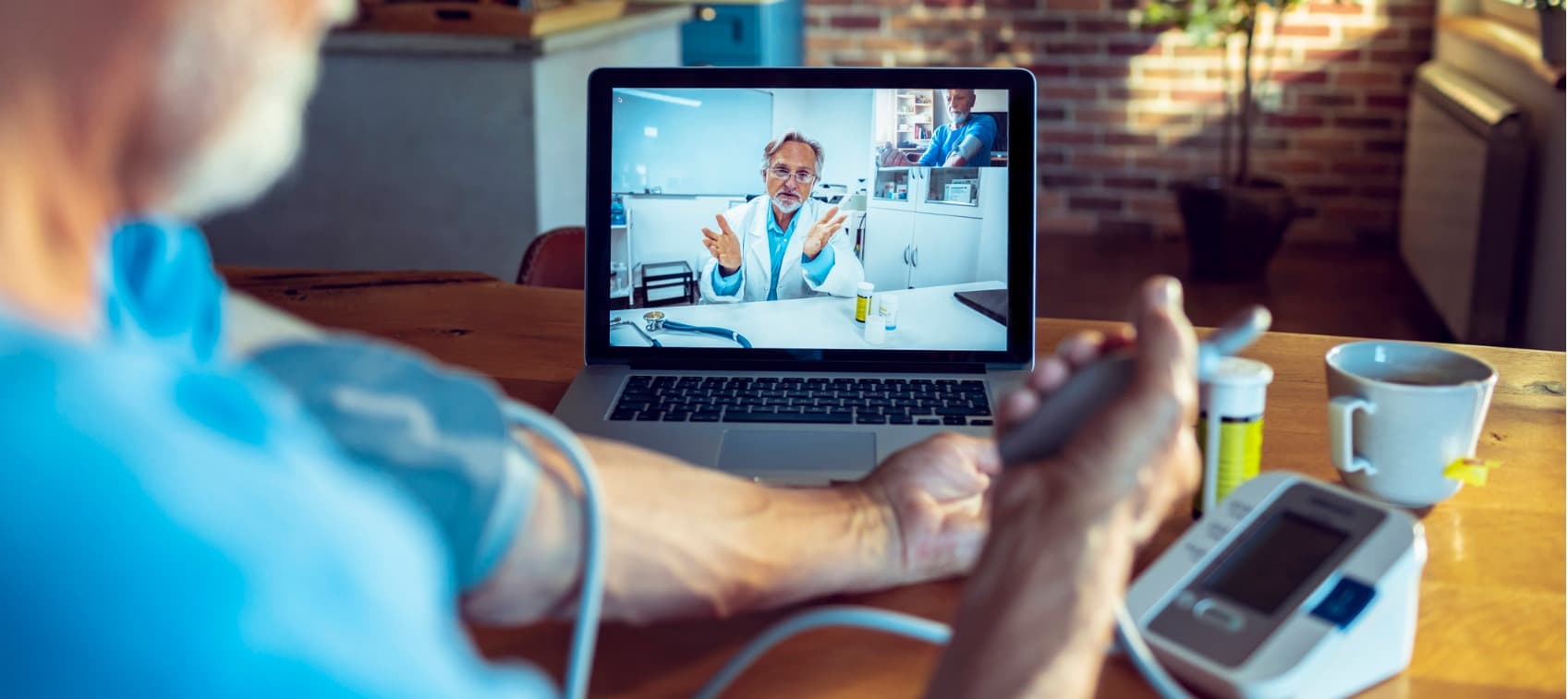
The best time to take your blood pressure is when the nurse puts the cuff on you at your checkup, right? Sure.
However, sometimes we need to take our blood pressure at home. In some circumstances, your doctor may ask you to monitor your blood pressure readings at home and keep a record of those readings.
In the event that you’re asked to monitor your blood pressure at home, it’s important to know what your blood pressure is, why you might need to monitor your blood pressure at home, how to prepare to track your readings, and when is the best time to take your blood pressure.
So, let’s get into it.
What Is Blood Pressure?
The heart’s most important function is to pump blood throughout the body to supply the organs and tissue with the blood they need to function.
Each beat of your heart pumps blood into the circulatory system’s large blood vessels. In the blood’s journey through the body, it puts pressure on the walls of your blood vessels.
Blood pressure readings are how this pressure is measured, and it is made up of two values:
- Systolic blood pressure (commonly called the “top number”) is the pressure from when your heart beats. The heart contracts or squeezes as all muscles do, and it pumps the oxygen-rich blood into your blood vessels that your body needs and uses to function.
- Diastolic blood pressure (commonly called the “bottom number”) is the pressure that occurs when the heart relaxes after its contracted state. This number is always lower than the systolic pressure.
The blood pressure unit of measurement is millimeters of mercury (mmHg), and your systolic and diastolic numbers are always given as a pair. The systolic is first, and it is followed by the diastolic. It is given as a ratio, so it is normal for you to hear it said as the systolic number over the diastolic number.
Together, these numbers give the full picture of the pressure on the blood vessel walls for the duration of an entire beat cycle. Understanding blood pressure can help you prepare to track your own readings at home, but you may still be wondering why you might be asked to track your BP readings at home.
Why Do I Need to Monitor My Blood Pressure Levels at Home?
Monitoring at home can help support the healthcare your physician is trying to give you by:
- Documentation for early diagnosis. Consistent monitoring at home can provide a broader picture of what’s happening in your body. Noting consistent elevations in your blood pressure levels can help doctors with proper diagnosis.
- Treatment tracking. Monitoring your blood pressure can help your doctor see if various treatments like medication, supplements, or lifestyle changes are having the desired effect on your blood pressure levels.
An accurate overall picture can tell your doctor if more is needed, a balance has been struck, or if treatment has exceeded its goal and needs to be dialed back.
- Self-monitoring = Self-control. Seeing the results of your efforts through self-monitoring can give you a sense of greater control and responsibility when it comes to your own health.
- Lower medical costs. Self-monitoring means less frequent visits to the doctor’s office and fewer copays.
- Detecting a Doctor’s Office Anomaly. You might be like other people who experience restless, anxious feelings when seeing a doctor. This happens to people from time to time and creates blood pressure spikes at the office.
Other people experience the opposite effect and have lower blood pressure when they’re observed at the doctor’s office. However, when they get home, that’s when their blood pressure is elevated. Monitoring at home gives your doctor a better sense of your true levels on a regular basis.
Knowing why you need to monitor your blood pressure readings at home doesn’t mean you’re ready to start tracking them at home. First, you’ll want to make sure you’re prepared to monitor your blood pressure at home.
Preparing For At-Home Blood Pressure Monitoring
First, you’ll want to acquire a home blood pressure monitor. You can find them at most pharmacies, medical supply stores, and online. Unless you have medical training for the more traditional blood pressure reading method, you may find that a digital monitor works best for you.
Digital monitors with an upper arm cuff that is fitted into position properly are typically the most accurate. Occasionally, if the upper arm can’t be fitted properly with a big enough cuff or you, the patient, finds it too painful, your doctor will give you the clearance to monitor your blood pressure by fitting the cuff around the lower arm or wrist. However, this can be more difficult and less accurate.
When you choose the right monitor for you, you’ll want to keep in mind:
- Cuff size - A proper fit is very important to accuracy.
- Display - In order to keep a record, you need clear and easy-to-read information.
- Cost - Discuss what’s covered with your health insurance provider. Prices and coverage vary, so choose what works best for you that meets your other criteria.
Once you’ve found a monitor, have your doctor’s office validate if the monitor gives accurate and repeatable readings.
So, you’re all set, right?
You understand what blood pressure is, you know why you’re monitoring your levels at home, and you’ve got your monitor all set up and ready to use. All that’s left is to know the best time to take your blood pressure.
When Is The Best Time To Take Your Blood Pressure?
When you begin monitoring your blood pressure at home, it’s important to know that your blood pressure fluctuates throughout the day.
Your doctor may give you specific guidance on when they want you to check your blood pressure levels, but if you are self-monitoring or haven’t been given direct instructions for monitoring, here are some tips.
Take measurements twice daily. Take your first blood pressure reading first thing in the morning before you eat or take any medications. It’s important to remember that various causes can elevate your morning blood pressure. That’s why the second reading can give your doctor more information.
For your second measurement, take it in the quiet part of your evening. Because it is common for a higher blood pressure in the morning, a second reading can show the doctor if elevation is a recurring problem throughout the day.
Monitoring Tips
If you’ve ever hated that feeling of disappointing your dentist when he asks about your flossing habits or when your physician notes that you’ve gained the five pounds you were meant to lose, this is your time to shine and avoid that feeling by taking the best and most accurate self-monitoring blood pressure records your doctor’s probably seen in ages.
Here’s how:
- Twice-a-Day - As mentioned, take your readings twice each day. Aim to keep records at roughly the same time of day, and take two to three readings to make sure your results are accurate.
- Record Results - Accurate record keeping requires keeping a record. Write the day, the time of day, and number each reading 1 through 3. Record each reading in the systolic over diastolic way.
- Wake Up - While it’s best to get a reading in the morning before eating, exercising, supplements, or medications, you should avoid taking it as soon as you roll out of bed. Give yourself a few minutes to prepare for the day before you take that first reading.
- 30 Minutes Out - Avoid food, alcohol, caffeine, and tobacco for at least 30 minutes before you take a measurement. Additionally, make a stop at the restroom beforehand. Any of these, including a full bladder, can have an impact on your blood pressure readings.
- Cuff It; Don’t Muff It - Place the cuff on bare skin instead of over clothing. To avoid undue pressure from a rolled up sleeve, you’ll want to slip your arm out of your shirt sleeve while you get your readings.
- Measure Twice - You may want to measure three times, but measure at least twice. Take a rest of one to three minutes between readings to support accuracy. Taking your blood pressure too soon after taking your blood pressure can throw off your numbers.
You and your doctor can admire your impeccable records, and your doctor can use the information you’ve collected to get a broader picture of what your blood pressure levels say about your health.
Summary
It may sound like a daunting task to be responsible for monitoring your blood pressure at home, but you can do it.
With a better understanding of what blood pressure is and what your readings mean, armed with the right equipment, and full knowledge of why you need to monitor your levels at home, you’re ready to keep the best records your doctor has ever seen.
Accurate records can help lead your doctor to an accurate diagnosis.


